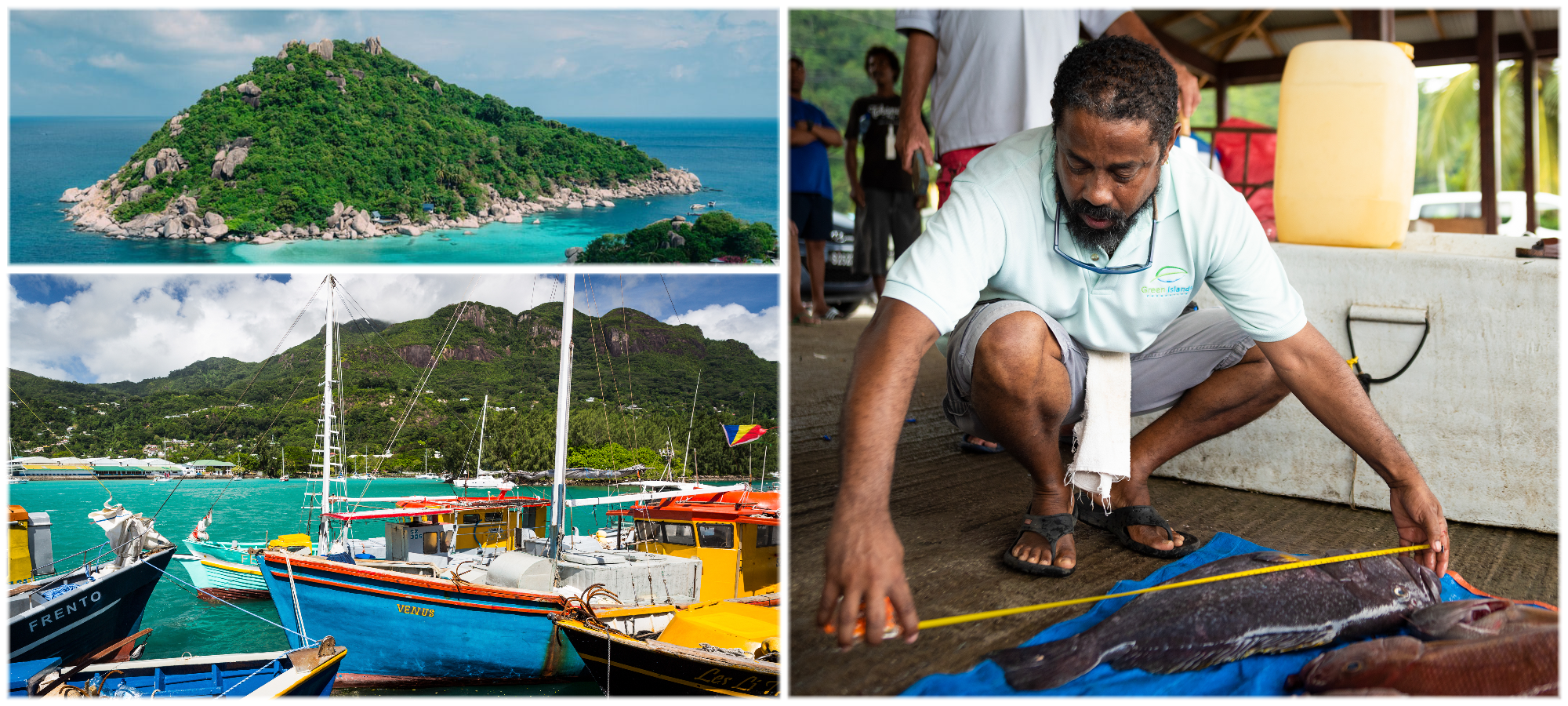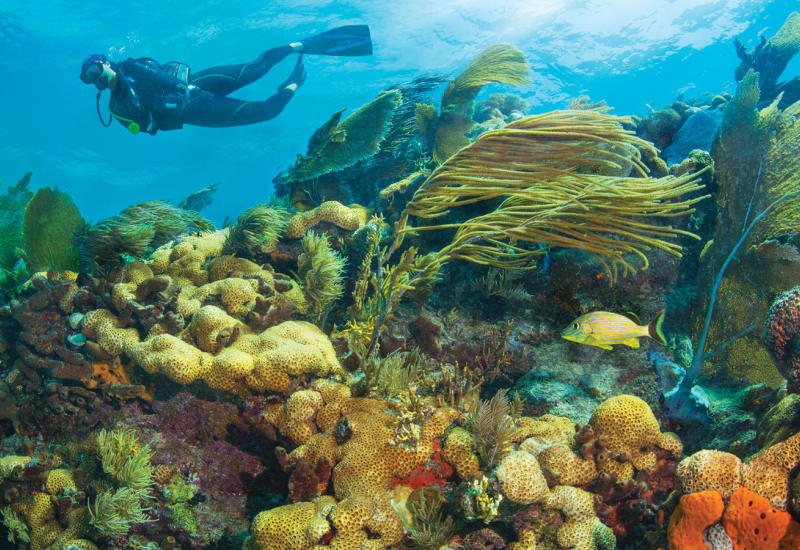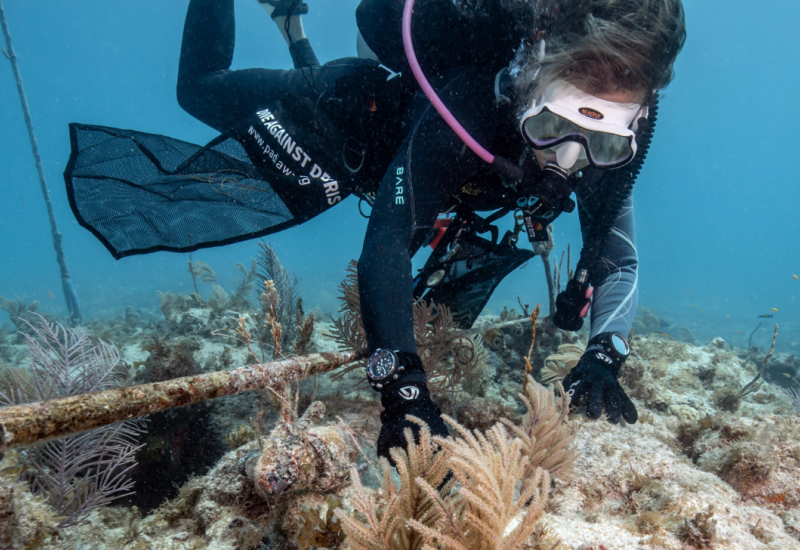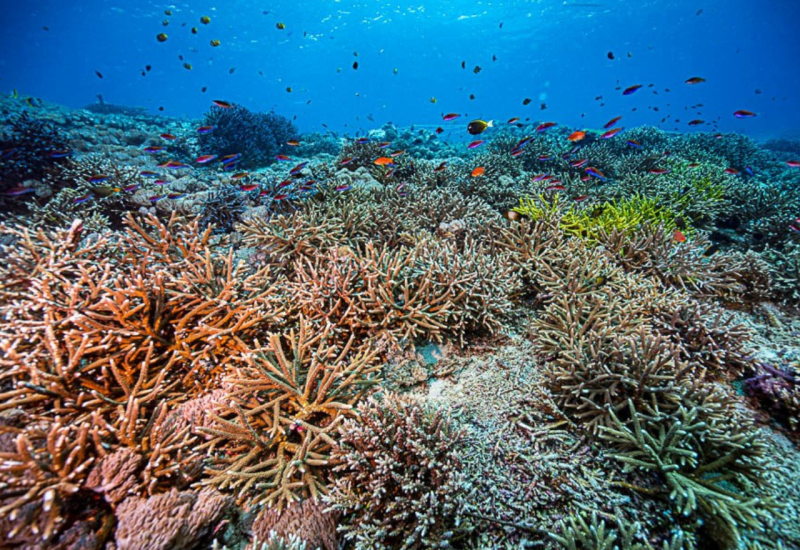Inside The Nature Conservancy’s Effort to Create Marine Protected Areas Around the World
A nation of 115 islands, the Seychelles’ sinew is more sea than terra firma. The Indian Ocean envelopes up to 90 percent of its territory, a place where sun dictates the lifestyle and coral reefs shape the market.
Only eight years ago, this archipelago off the East African coast protected less than 1 percent of its vital waters. Now, it protects more than 30 percent.
The sweeping shift began in 2012, when The Nature Conservancy launched a project that created 13 new marine protected areas (MPAs) in the Seychelles. Combined, they protect an area almost the size of Texas, making it the second largest MPA in the world.
The international nongovernmental organization powered the change by restructuring $21.6 million of the Seychelles’ debt to fund new protections, and helped establish the Seychelles Conservation and Climate Adaptation Trust (SeyCCAT) to distribute the redirected funding in support of marine conservation and sustainable economic development.
Now that there’s proof the idea can work, the Nature Conservancy is spreading it worldwide—fast. In the next five years, its Blue Bonds for Conservation initiative aims to use debt-for-nature swaps to increase the amount of ocean protected by 15 percent, helping 20 countries establish MPAs targeted to cover more than 1.54 million square miles. Full implementation of the idea would see $3 billion in debt-for-nature swaps free up to $1.6 billion in government spending for ocean protection.
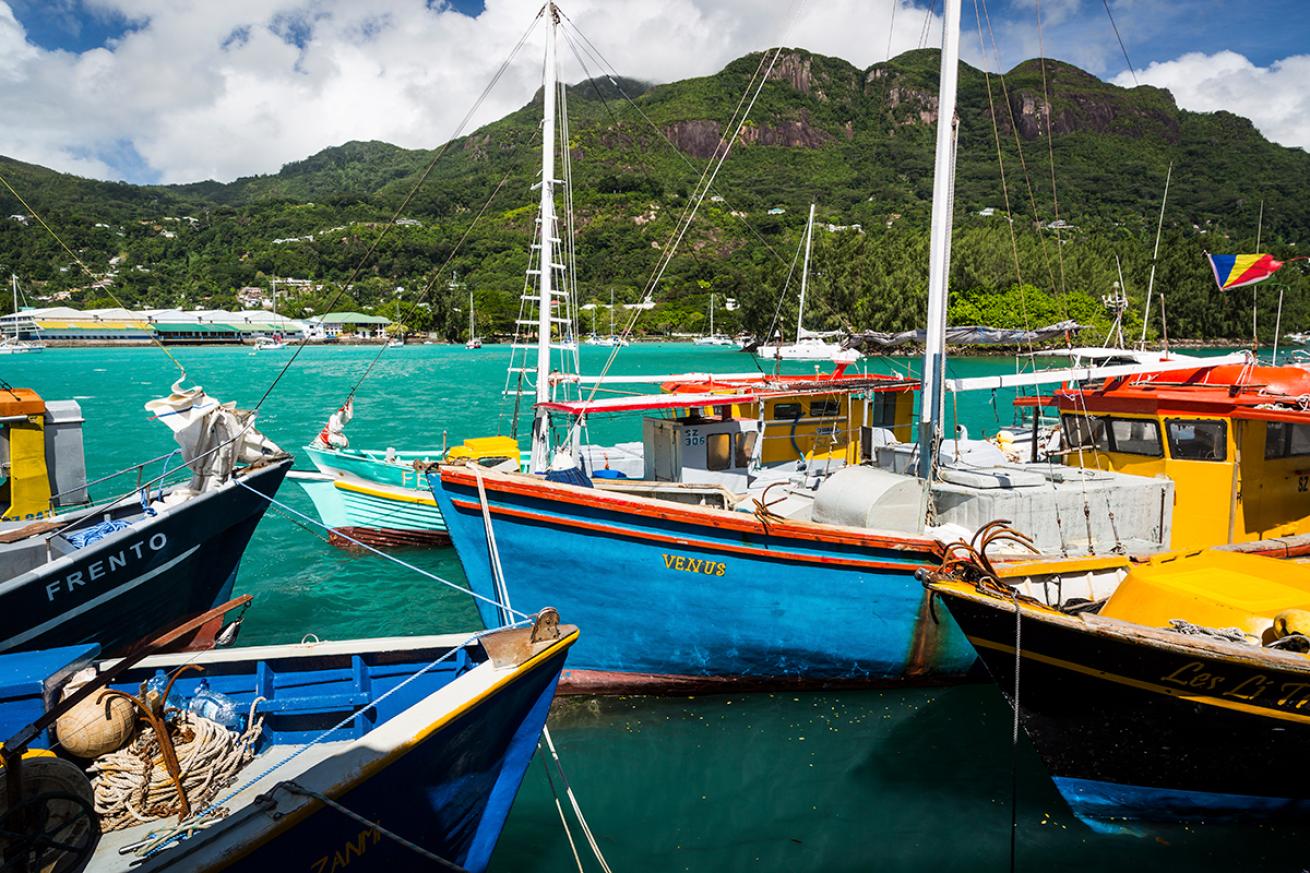
The Nature Conservancy/Jason HoustonBoats float in the Old Port in Victoria on Mahé Island. Industrial and artisanal fisheries are key contributors to Seychelles' economy.
Redirecting Debt to Reefs
Restructuring a country’s debt to fund conservation is known as a debt-for-nature swap. A group like the Nature Conservancy buys a government’s debts for a discounted rate and negotiates a new payment plan with the country. The new plan has different repayment terms (like a lower interest rate or longer payment period), and the discounted portion of the debt is used to fund conservation activities.
“We're really just using financial engineering...that hedge funds use, or banks, and using it for Mother Nature as our client,” explains Robert Weary, deputy managing director of Blue Bonds.
In turn, the partner government works to establish a comprehensive plan for how the nation’s oceans will be used, protecting at least 30 percent. The conservancy helps set up an independent trust in-country, which uses money freed up by the debt swap to fund the newly created marine protected areas.
Weary says financed marine protected areas are worth the trouble of yearslong negotiations because they strengthen oceanic economies while restoring nature: No-take zones allow fish populations to rebound, which can in turn increase fishers' profitability and draw tourists who want to dive or kayak around healthy reefs. Protected areas also preserve reefs and mangroves that protect people and infrastructure from major waves and storms.
Such benefits are of keen interest to a low-lying island nation like the Seychelles, whose economy revolves around fishing and tourism while it battles coral bleaching, saltwater intrusion and intensified seasons driven by climate change.
Debt-for-nature swaps began in 1987, and the Nature Conservancy has participated in 20 since 1989. The Seychelles deal is the first to focus on marine ecosystems, result in newly protected areas and use impact capital, investment funding meant to provide social or environmental benefits rather than just profit. Previously, debt-for-nature swaps largely created funding streams for already protected rainforests. Weary says none of the Nature Conservancy’s partners have defaulted on or refinanced their loans to date.
The Seychelles project took four years to complete, but Weary believes the Nature Conservancy can complete 20 deals in five years thanks to a $40 million TED Audacious Project grant, increased staffing, acquisition of political risk insurance from the U.S. International Development Finance Corporation, partnerships with major commercial banks, and decades of accumulated experience and legal infrastructure.
“We're working on a couple deals, one in the Caribbean at $200 million, and one in Africa at $500 million,” he says.
Success in the Seychelles
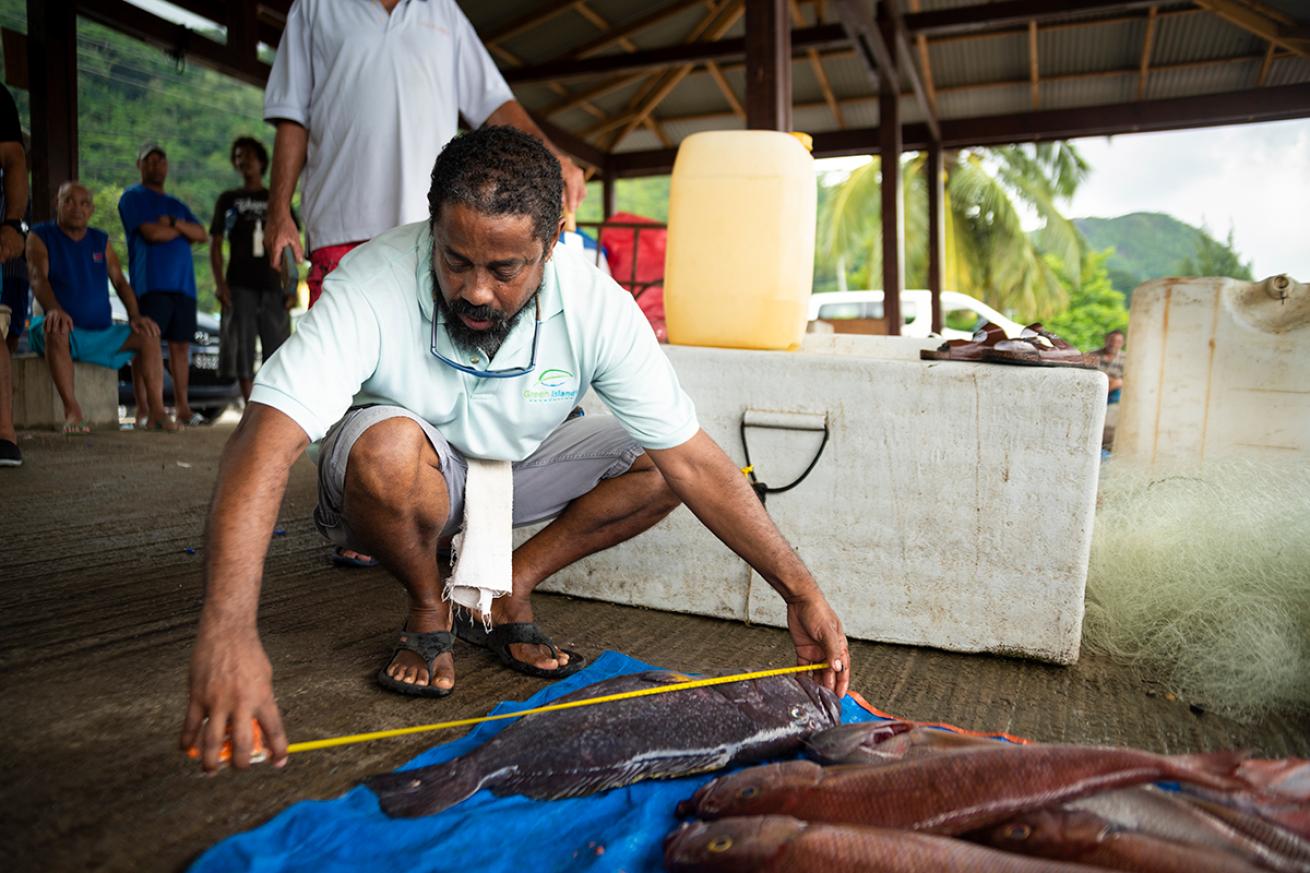
The Nature Conservancy/Jason HoustonFrank Volcere, working for Green Islands Foundation on a SeyCCAT-funded project, measures vulnerable and endangered fish species caught by fishermen to monitor artisanal fish species of local concern.
Enticingly remote, the Seychelles draws its share of celebrity honeymooners and thousands of tourists looking to explore arboreal peaks and vibrant reefs across the smattering of islands that are home to fewer than 97,000 people.
The debt-for-nature swap put the small country at the forefront of global marine conservation. The new MPAs well exceed the United Nations target of 10 percent. A comprehensive plan zoning 100 percent of the nation’s oceans, including the MPAs, is expected to be formalized in December.
The plan formed throughout a six-year public engagement campaign that brought more than 200 stakeholders to the table, including the government, NGOs, and marine sectors like tourism, fishing, shipping, petroleum and maritime safety.
Incorporating broad input in the plan, coupled with money to support its implementation, helps Seychellois control their own future, says Angelique Pouponneau, CEO of SeyCCAT, the trust established during the debt swap.
She points to the fishing industry, which is one of the country’s main industries and is so essential that artisanal fishers continued working during the country’s COVID-19 lockdown. Those same small fisheries have struggled in recent years as coral bleaching and overfishing decreased fish populations, making fishers work harder for a profitable haul.
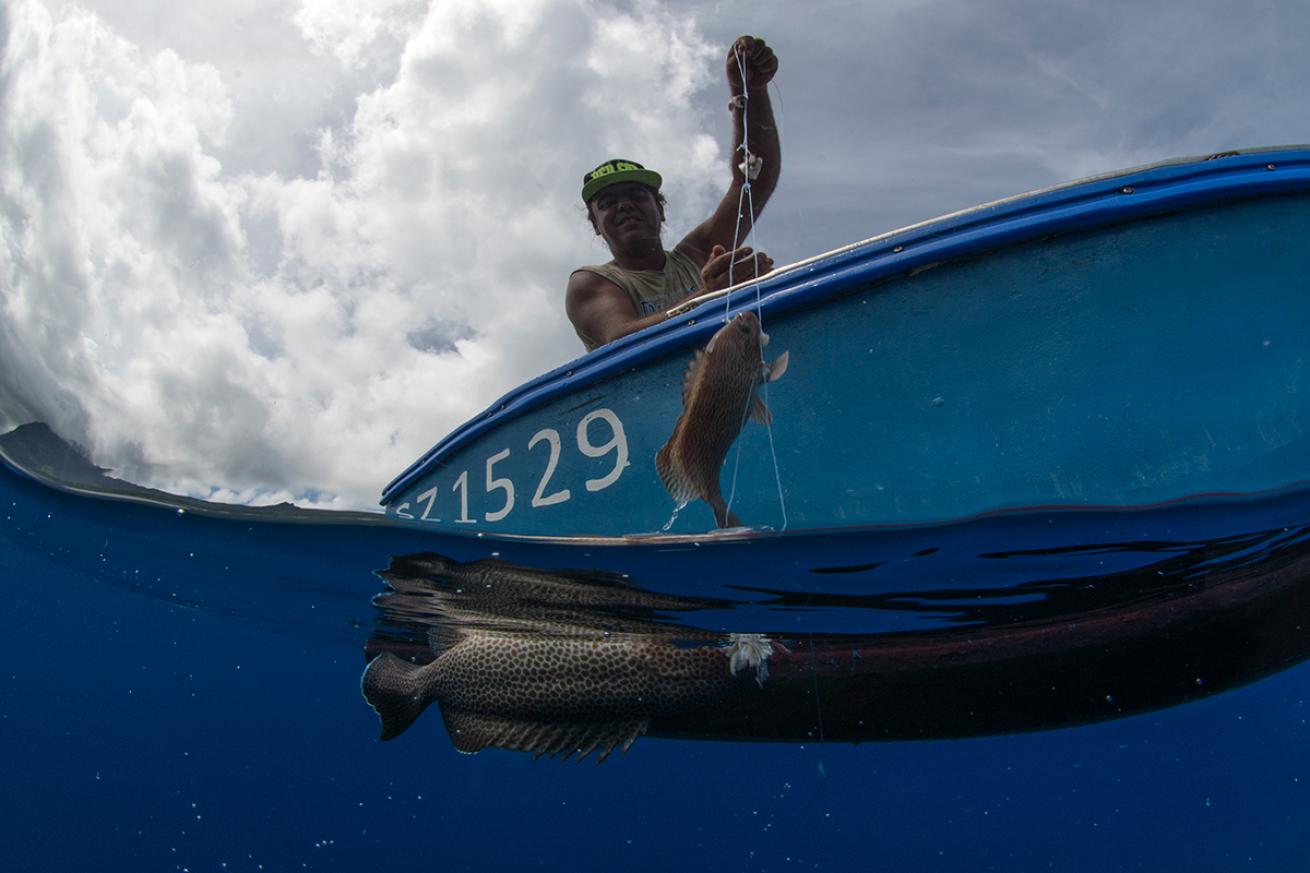
The Ocean AgencyA Seychellois fisherman reels in his catch near the port of Bel Ombre on Mahé Island.
Two sustainable blue economy projects already funded by SeyCCAT grew from bottom-up fishery leadership—a voluntary fishery closure and a yearlong monitoring project to identify species of concern. Both projects resulted in the fishing industry making new, sustainable changes to its practices without government involvement.
“If you spoke to fishermen five years ago, you would not have even thought that this would ever be possible,” says Helena Sims, a Seychelles native and the Nature Conservancy’s project manager for the marine spatial plan, of the voluntary closure.
But Pouponneau believes the engagement campaign’s combination of consultation and education garnered fishers’ support for the plan, while the trusts’ grants equip them with the means to enact preservation programs that make sense locally.
“That’s fishers taking control of their destiny,” she says.

